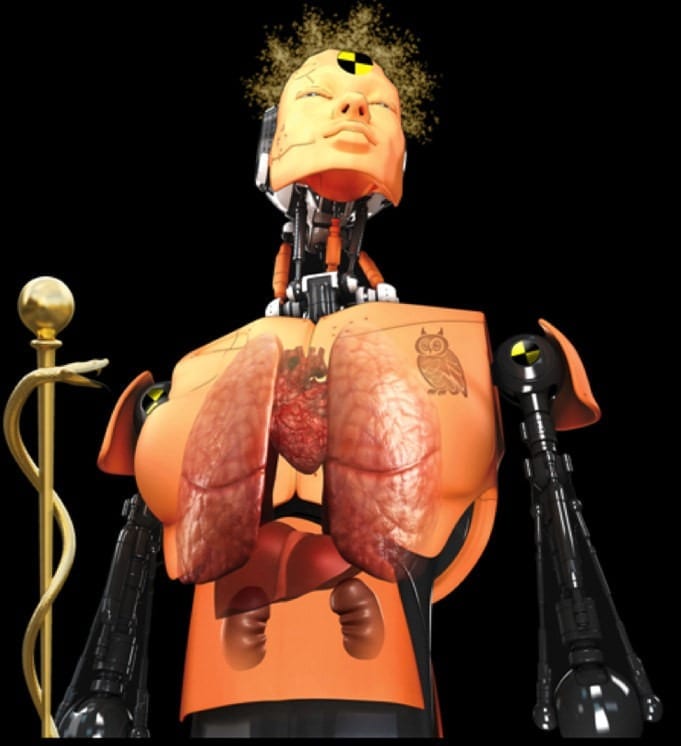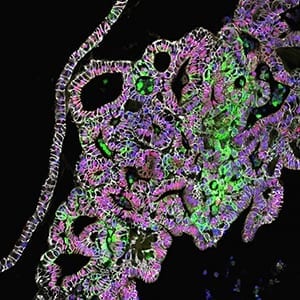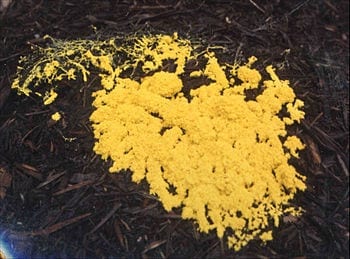
Scientists are reporting significant progress toward creating “homo minutus” — a benchtop human.
Researchers have successfully developed and analyzed a liver human organ construct that responds to exposure to a toxic chemical much like a real liver.
The advance — successful development and analysis of a liver human organ construct that responds to exposure to a toxic chemical much like a real liver — was described in a presentation by John Wikswo, the Gordon A. Cain University Professor and Director of the Vanderbilt Institute for Integrative Biosystems Research and Education (VIIBRE) at Vanderbilt University.
The achievement is the first result from a five-year, $19 million multi institutional effort led by Rashi Iyer, senior scientist at Los Alamos National Laboratory (LANL), and Wikswo. The project is developing four interconnected human organ constructs — liver, heart, lung and kidney — that are based on a highly miniaturized platform nicknamed ATHENA (Advanced Tissue-engineered Human Ectypal Network Analyzer). The project is supported by the Defense Threat Reduction Agency. Similar programs to create smaller, so-called organs-on-chips are underway at the Defense Advanced Research Projects Agency and the National Institutes of Health.
“The original impetus for this research comes from the problems we are having in developing new drugs,” said Wikswo. “A number of promising new drugs that looked good in conventional cell culture and animal trials have failed when they were tested in humans, many due to toxic effects. That represents more than $1 billion in effort down the drain. Our current process of testing first in cell lines on plastic and then in mice, rats and other animals simply isn’t working.”
In recent years, a cadre of scientists and clinicians around the world has begun to develop more relevant and advanced laboratory tests for drug efficacy and toxicity: small bioreactors that can form human organ structures and are equipped with sensors to monitor organ health.
Ultimately, the goal is to connect the individual organ modules chemically in a fashion that mimics the way the organs are connected in the body, via a blood surrogate. The ATHENA researchers hope that this ”homo minutus,” with its ability to simulate the spatial and functional complexity of human organs, will prove to be a more accurate way of screening new drugs for potency and potential side-effects than current methods.
Devices of this type could also be extremely useful in the field of toxicology. Of the tens of thousands of chemical compounds being used routinely in commerce today, only a small fraction has been tested for toxicity. And even those have been examined only for acute toxicity, not for sub-lethal or chronic effects, because of the expense and time required by such tests. Human organ construct/organ-on-a-chip technology could make this process substantially cheaper and faster.
The Latest on: Homo minutus
[google_news title=”” keyword=”Homo minutus” num_posts=”10″ blurb_length=”0″ show_thumb=”left”]
via Google News
The Latest on: Homo minutus
- A puzzling mix of artifacts raises questions about Homo sapiens' travels to Chinaon April 17, 2024 at 4:30 am
They combined toolmaking practices carried across northern Eurasia with tried-and-true implements made by local Homo groups, possibly Neandertals or Denisovans. Shiyu’s mix of stone tools and ...
- The Edge of Homo Sapiens Over Neanderthals Wasn’t Just Brains, Suggests Research: ScienceAlerton March 26, 2024 at 6:44 pm
The age-old question of why Homo sapiens flourished on Earth while our close evolutionary cousins, the Neanderthals, faded into extinction remains a subject of intrigue. It has been hypothesized ...
- Where did Homo sapiens go after leaving Africa? New study has an answeron March 25, 2024 at 10:40 am
Our species emerged in Africa more than 300,000 years ago, with a migration out of the continent 60,000 to 70,000 years ago heralding the start of the global spread of Homo sapiens. But where did ...
- Fact Check: Is the Homo Piscis fish real or fake? Story behind human faced fish exploredon January 21, 2024 at 10:35 pm
Claims of the existence of the Homo Piscis fish went viral this month. A YouTuber asserted that human-faced fish was discovered in a lake. Despite the assertion going viral and grabbing the ...
- The origin of our specieson December 24, 2023 at 1:15 am
Our Human Evolution gallery explores the origins of Homo sapiens, tracing our lineage since it split from that of our closest living relatives, the chimpanzee and the bonobo. Gallery developer Jenny ...
- Homo habilison June 24, 2021 at 5:00 pm
Homo habilis ("handy man", "skillful person") is a species of the genus Homo, which lived from approximately 2.5 million to 1.8 million years ago at the beginning of the Pleistocene.
- Programme 4 : Homo Interneticus?on August 16, 2020 at 4:10 pm
Are we empowered, connected and enlightened with the world's knowledge at our fingertips? Or distracted and addicted with shorter attention spans> Are our skittering brains bombarded and stupified ...
- Homo sapiens: Out of Africaon August 21, 2019 at 11:47 pm
While it is generally accepted that the forerunner to Homo sapiens - Homo erectus - left Africa about 1.5 million years ago to populate other parts of the world, there are two main theories about ...
- Homo Monstrosuson October 30, 2016 at 3:30 pm
Homo Monstrosus For 2,000 years most educated men believed that remote areas were inhabited by monstrous races. It was only with the 19th century that it became clear that there was only one ...
- Homo erectus Stands Aloneon July 18, 2014 at 6:25 pm
Taken together, these five individuals, although highly variable in appearance, are believed to provide a snapshot of Homo erectus, the first human species to migrate out of Africa. The most ...
via Bing News










